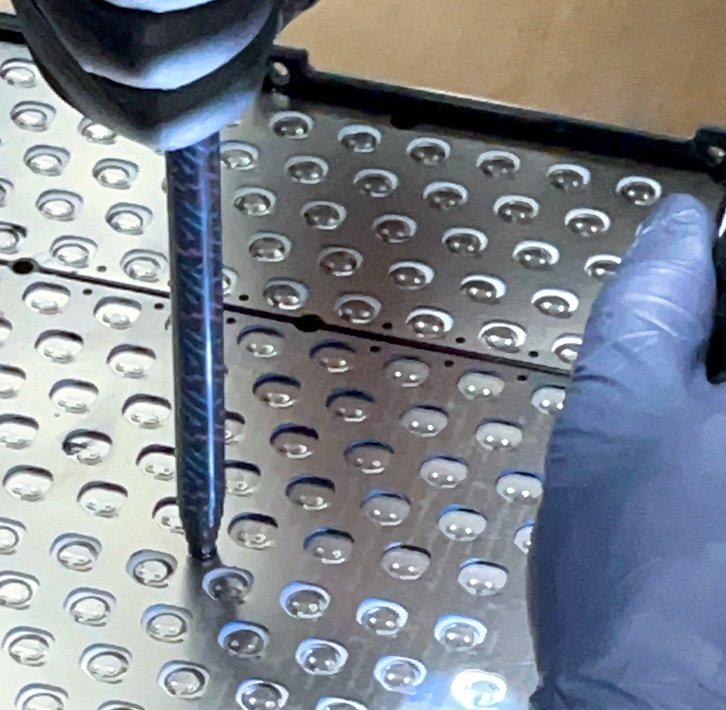If you’re considering foam as a reliable solution to your battery potting challenges, you could be holding your performance back. Foam doesn’t just compromise process efficiency—it also falls short in critical areas like safety and durability.
Below we’ll break down five important ways that foam underperforms. We’ll also introduce a superior alternative: non-cellular elastomers, a battery potting solution that delivers better safety, thermal conductivity, and processing efficiency. And that’s just for starters.
Here's what you should know before choosing foam.
As battery applications in e-mobility, portable electronics, and numerous other devices continue to soar, safety is more critical than ever. Yet, on multiple fronts, foam encapsulants introduce safety vulnerabilities.
"In my experience, we’re seeing more manufacturers reprioritize safety,” says Joe Staller, Senior R&D Chemist, Epic Resins. “And that means they’re rethinking foam because that option is simply not as safe, especially compared to non-cellular elastomers."

"We're seeing more manufacturers reprioritize safety. And that means they're rethinking foam because that option is simply not as safe."
- Joe Staller, Senior R&D Chemist, Epic Resins
Better thermal runaway prevention: With superior heat dissipation, rather than the insulative properties of foam, non-cellular elastomers efficiently transfer heat. They dramatically reduce the risk of thermal runaway—one of the biggest dangers in battery applications.
Superior flame retardancy: Foam materials contain large voids and cannot hold the same concentration of flame retardant as non-cellular elastomers. That’s why elastomer compounds contain significantly more flame-retardant, creating better fire protection and helping to meet today’s increasingly stringent safety standards.
Foam may seem like a straightforward solution, but it introduces unpredictability. Its sensitivity to humidity and temperature fluctuations, for example, leads to processing inconsistencies. Meanwhile, its non-uniform expansion can put unnecessary stress on sensitive components. "It's not the easier, gentler way to encapsulate batteries, even though it may seem like it is," says Matt Veenhuis, Technical Sales at Epic Resins. "It's also extraordinarily hard to process foam the same way, every shift, every day."
More reliable, efficient production. Non-cellular polyurethane's homogeneous composition helps ensure a repeatable process shift after shift.
Fewer disruptions. Unlike foam, non-cellular elastomers are far less sensitive to environmental factors, and that means less need for production line adjustments, machine recalibrations, and unplanned downtime.
Consistent material properties. With zero density variation, non-cellular elastomers provide uniform coverage - without placing unnecessary stress on components.
Foam potting is often viewed as the budget-friendly option, but the reality is far more complex. Hidden—or often overlooked—costs can quickly erase any upfront savings.
"Foam leads to far more production downtime and excessive material waste,” says Veenhuis. “It also typically requires expensive metal casings for structural support, adding another layer of cost. Over time, these extra expenses can significantly impact your bottom line."
Way less downtime. Non-cellular elastomers are far more environmentally stable. That helps ensure predictable, repeatable performance—day in, day out—and reduces expensive downtime.
Less material waste. With a more controlled and efficient application process (see No. 2), non-cellular elastomers minimize waste, improving yield and overall material efficiency.
More affordable casing options. Foam’s lack of structural integrity often requires costly metal casings. In contrast, the inherent strength of non-cellular elastomers allows for less expensive casing materials.
Foam’s lower thermal conductivity and non-uniform heat distribution can lead to hot spots and accelerated material degradation. The result? A shorter lifespan for the battery.
"Heat kills," says Veenhuis. "When a potting material like foam can’t move the heat outward, it’s going to break down faster than a non-cellular elastomer would."

"Heat Kills. When a potting material like foam can't move the heat outward, it's going to break down faster than a non-cellular elastomer would"
- Matt Veenhuis, Technical Sales, Epic Resins
Consistent operating temperatures. By evenly dissipating heat, non-cellular elastomers prevent localized overheating, allowing the battery to function at peak efficiency.
Stronger material integrity. Excess heat weakens structural bonds over time. Because non-cellular elastomers don’t trap heat like foam, they help preserve the battery’s internal components.
Longer-lasting battery life. With less thermal stress and material degradation, batteries maintain their charge capacity longer—improving reliability and reducing premature failure.

You might hesitate to use non-cellular elastomers due to their higher weight, favoring foam for its lighter properties. But as you’ve just seen from the above, weight alone doesn’t tell the whole story. "Non-cellular elastomers have a proven track record as effective potting compounds that goes back decades," says Staller. "If you want all the advantages that they deliver, the weight factor is a trade-off that just makes good sense."
Added weight, added safety. A key reason non-cellular elastomers weigh more than foam is their higher flame retardant content—a critical factor in battery safety.
Better thermal performance. Foam’s lower weight comes at the cost of poor heat dissipation. On the other hand, the density and composition of non-cellular elastomers help distribute heat more efficiently, preventing thermal runaway and reducing material degradation.
Stronger material, lighter casings. Since foam often requires heavier metal casings, the advantage of its lighter weight only goes so far. Non-cellular elastomers, by contrast, reinforce the battery itself—allowing for lighter casing materials like plastic.
Battery potting plays an integral role in the safety, long-term reliability, and cost efficiency of battery products. Yet not all potting solutions are created equal. Foam's flaws drive up production costs while also increasing safety risks. Non-cellular elastomers provide superior flame resistance, thermal performance, and production efficiency—ultimately delivering the protection today's battery systems demand.
Why settle for costly risks? Upgrade to a safer, smarter, and more cost-effective potting solution with Epic Resins.